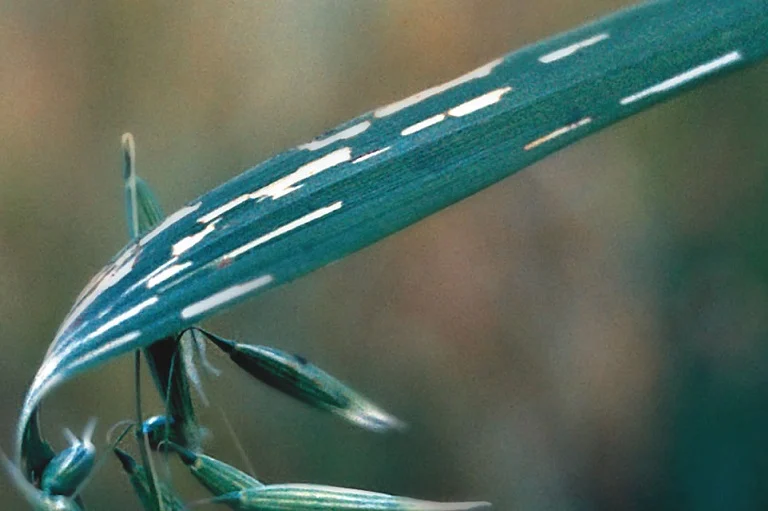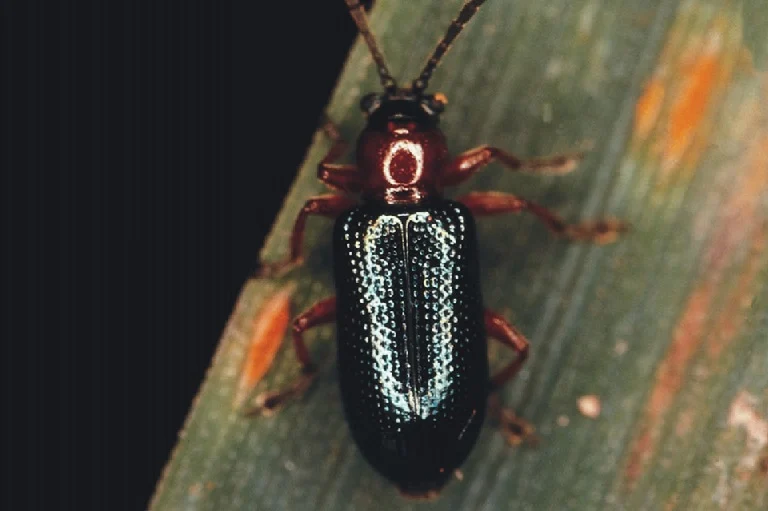
Cereal leaf beetle
Oulema melanopa
Identification
The adults are 4-5 mm long, with black heads, red thorax, blue/green metallic coloured wing cases and red/orange legs. The larvae are ‘slug like’ in appearance with yellow/brown humped bodies which are covered with a jelly/slimy external texture (a mixture of mucus and excreta) the purpose of which is to mimic bird or large insect droppings. The larvae are very slow moving and on close inspection 3 pairs of legs can be found near to the head.
Symptoms
Both the adult and the larva feed between the veins on the upper leaves of cereals and grasses leaving thin conspicuous ‘windowpane’ strips of eaten leaf.
Life-cycle
From April onwards the adults emerge from their overwintering sites in search of suitable plants to feed on. In mid-summer yellow/ orange coloured eggs are laid singly or in groups of 2-3 on the upper leaf surfaces of host plants and the larvae emerge 10 days later. After approximately 3 weeks, when fully fed, the larvae move into cracks in the soil to pupate. Three weeks later the larvae emerge to feed on grasses and cereals before moving to sheltered overwintering sites later in the autumn.
Importance
Although widely seen in cereal crops, especially oats, they are very rarely of economic importance and predation keeps the population in check.
Threshold
Treatment is not normally necessary in the UK, but if flag leaves are being badly grazed a suitable insecticide may be necessary.
Biscaya will control cereal leaf beetle if the timing for orange wheat blossom midge coincides.

Adult cereal leaf beetle

Cereal leaf beetle damage

Cereal leaf beetle, larva


